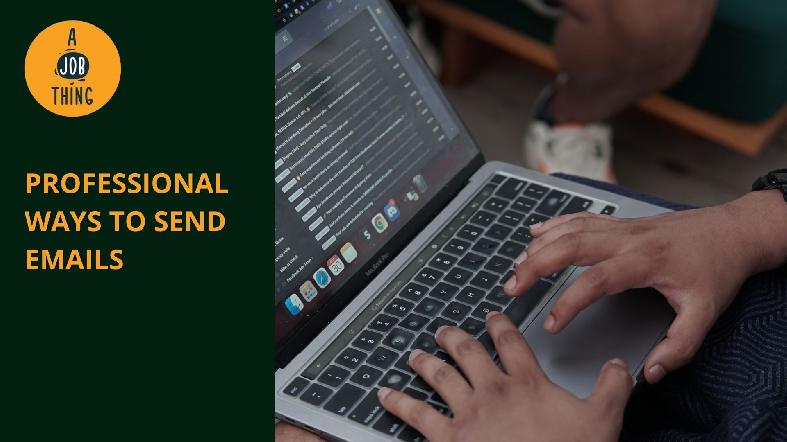
What You Should Do Before Sending an Email
Are You Hiring?
Find candidates in 72 Hours with 5+ million talents in Maukerja Malaysia & Ricebowl using Job Ads.
Hire NowEmail plays a significant role in our professional lives. Did you know that the average office worker's inbox receives 121 emails each day?
That's why it's critical to design a well-written email with a clear purpose and a concise message. You'll be able to develop good professional relationships by putting a lot of thought and attention into your emails. It may also save you and the reader time while improving your business's bottom line.
Here are 10 best email practices to get you started.
1. Keep it short and sweet
When drafting an email, make your message short and sweet. Include all necessary information in your email, but keep it short. When you send short, direct emails, it demonstrates that you value the recipient's time. Only a tiny percentage of people have the time to read lengthy emails. The last thing you want is for your message to be ignored because it is too long.
Emails are better for distributing resources like links and documents, recapping conversations, and recording choices or requests. Anything longer would require a phone call or a meeting.
2. Make use of bullet points and clarify what you want the reader to accomplish
Breaking down your email into bullet points allows the reader to scan the message and find the essential elements swiftly. Bullet points are handy if you're speaking with a small group of people about a project.
Include a clear call to action as well. Italicise or type in bold the action and due date to emphasise them.
3. Make proper use of the To:, CC:, and BCC: fields.
It's vital to use email fields effectively; otherwise, you will clog other people's inboxes with a slew of emails, some of which will be irrelevant to them.
What each field accomplishes is as follows:
To: Include the email address of the person (or people) to whom the message is addressed.
CC: It means carbon copy. It can be used to copy someone who does not need to take action but needs to be kept informed about the situation. Do not overuse CC or include persons that aren't necessary. You'll overload their inboxes. Use "To:" if you want the recipient to respond or take action.
BCC: It stands for blind courtesy copy. Use this field when you don't want other recipients to know that this person has been copied or if they don't need to see any more responses. Those in the BCC line will not receive any replies to the email. As a result, BCC is ideal for mass emails as it ensures that the recipients' contact information remains private.
4. Check that the subject line is relevant to the content.
The subject line should ideally be seven words or fewer and encapsulate the email's objective. The open rate of your email will increase if the topic is clear. Furthermore, the email's content must match the subject line; otherwise, the recipient will be confused.
5. Use the appropriate greeting
Your greeting depends on your recipient. A casual greeting like 'Hey' or 'Hi guys', for example, should be reserved for a close friend or colleague.
For a more professional tone, use 'Hi,' 'Hello,' or 'Dear.'
6. Be cautious when using emojis
The use of emojis in the workplace has become more accepted in recent years.
Emojis may be appropriate when emailing close coworkers or team members. However, you should use them cautiously and assess whether they are suitable in certain situations. Only use them with coworkers or clients you don't know IF they use them first.
Avoid using too many emojis or exclamation points, which can communicate intense feelings.
7. Pay attention to your tone
Overall, you should write your emails in a professional and welcoming tone. With coworkers or familiar clients, there's no harm in starting with a pleasantry like 'hope you're well' or 'hope you had a wonderful holiday.'
However, don't make things too complicated by inserting jokes in your email. Humorous quotes can offend people of different cultures since they might mean different things to them.
Also, avoid sarcasm because not everyone will get it and may misinterpret it.
8. Respond to emails promptly.
You should attempt to reply to your emails within 24 hours as a general rule, even if it's to indicate that you've received them. This is especially beneficial when responding to lengthy emails, as you may compose a concise response stating when you will respond adequately.
It's best to check with your boss to determine your company's expectations. Establishing expectations for fast responses to colleagues and clients is an integral part of providing excellent customer service.
9. Make proper use of reply-all and forwarding
Use the reply-all option only when necessary. Is it necessary for everyone to see your response? If the information is sensitive or only applies to a few recipients, use reply to choose specific recipients instead.
Forwarding an email is useful when someone who should receive the information is not on the email's original recipient list.
However, do not forward emails containing sensitive information. Remove the sensitive information before forwarding it if you don't want the new recipient to view it. Furthermore, if you're forwarding emails with extended threads, summarise the main points above the original thread.
10. Make sure your email is error-free.
Always proofread your email for spelling and grammar issues, as well as to ensure that it makes sense. You will appear unprofessional if you use misspelt words or poorly structured sentences.
It's also a good idea to have a coworker read over your email, especially if it requires a lot of information.
These email best practices, when utilised effectively, can be an excellent tool for improving communication and productivity. Make sure your employees are correctly trained on etiquette, procedures, and expectations.
Source: Tandem HR

